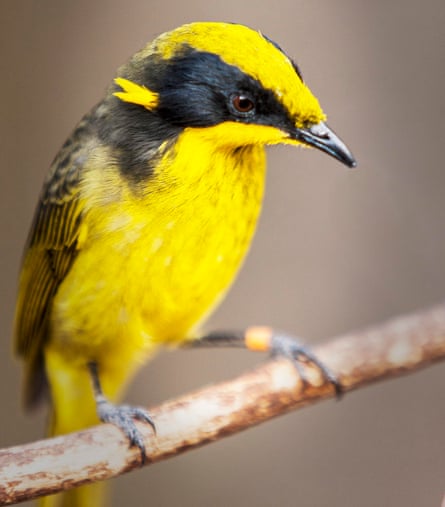Zoos Victoria has unveiled a groundbreaking $30m “master plan” to save 20 key species from extinction, with the federal government looking at adopting a version of the strategy on a national level.
The strategy has identified the vertebrate species most likely to be wiped out in the next 10 years and has devised funded plans for each species to save them from this fate.
The list of species is dominated by animals associated with Victoria, such as the mountain pygmy possum, the leadbeater’s possum, the eastern barred bandicoot and the orange-bellied parrot.
But the plan includes other species tended for by Zoos Victoria, including the Tasmanian devil and the Lord Howe Island stick insect, which has been largely killed off on the island that named it due to rats but has a sizeable captive population in Victoria.

The five-year plan sets out costed actions such as $3.56m for the eastern barred bandicoot, with $580,000 of this to be used for a “fighting extinction dog squad”, which comprises a team of trained Maremma dogs that will guard bandicoots from predators such as cats and foxes.
Breeding Tasmanian devils and looking at whether they should be released on to mainland Australia will cost $3.4m over five years, while reintroducing the southern corroboree frog back into the wild, where just a handful of the small colourful animals exist, will cost $3.69m.

Establishing an insurance population of brush-tailed rock wallabies will cost $430,000 and a plan to save the mountain pygmy possum and the helmeted honeyeater will cost $4.27m. A further $38,500 is needed to store genetic material of endangered species in freezers.
Zoos Victoria has raised around $1.6m in donations for the plan and has committed $10m itself, but will require government or private sector funding for the rest of the $30m.
Rachel Lowry, director of wildlife conservation at Zoos Victoria, said the strategy aimed to reverse the decline of animals in the wild, rather than simply shelter them in captivity.
“We’ve been in the position before where we’ve recorded extinctions and we can’t come to work every day and think that that is our role,” she said. “This plan hones down to the animals we are set to lose first and makes sure we are more proactive, that we aren’t too late to save them.
“We don’t want to say we gave it our best shot but lost – we want to give them the very best chance. Zoos in the past have just got involved when things have got dire but we want to position ourselves a bit differently now.
“There seems to be a growing acceptance among some academics that we need to triage species but I fundamentally don’t agree that some species have to become extinct. I think we have a poorer future when we agree to that.”
Lowry said she was most worried about the eastern barred bandicoot, which is now extinct in the wild in Victoria, the southern corroborree frog and the helmeted honeyeater.

The plan sets out breeding programs as well as partnerships with other groups and government agencies to ensure that there is suitable habitat to release animals back into the wild. Innovations include the “bodyguard” dogs and a training program for helmeted honeyeaters, which teaches them to dive for cover when they see a goshawk – a key predator of the dwindling species.

Gregory Andrews, the federal threatened species commissioner, said he was impressed by the plan and wanted to adopt a similar strategy at a national level.
“I think this is an excellent document because it explains the problems and sets out clear actions for recovery,” he told Guardian Australia. “This is a benchmark and [federal environment minister] Greg Hunt has asked me to use this as a template for the Australian government to follow, to turnaround Australia’s unacceptable rate of extinctions.
“I don’t want to pre-empt anything but we will see actions and targets.”
The federal government has provided funding for the guard dogs program, as well as money to support the eastern barred bandicoot, the southern corroborree frog, the bent-wing bat and the helmeted honeyeater. But Andrews would not say whether further funding was forthcoming.
The Victorian government also would not commit to specific funding, meaning it is likely that private donors will have to be found to ensure the $30m target is reached.
A spokeswoman for Lisa Neville, Victoria’s environment minister, said the state government “will continue to work with Zoos Victoria to discuss its ongoing needs”.

Comments (…)
Sign in or create your Guardian account to join the discussion